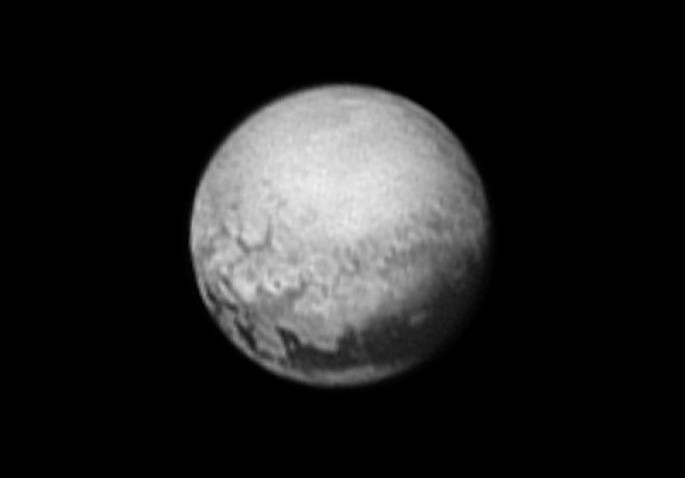NASA's New Horizons spacecraft is now fast approaching Pluto which will mark the first ever reconnaissance mission of the probe of the dwarf planet where the spacecraft will conduct its closest approach on July 14, Tuesday, already revealing a complex geology.
The dwarf planet apparently reveals a diverse surface where it is home to interesting geological features that planetary scientists find fascinating. According to New Horizons program scientist, Curt Niebur from NASA Headquarters in Washington D.C., the probe is already close enough to view Pluto's geology.
An interesting geological feature on Pluto is this whale shaped or heart shaped feature found on the lower left region of Pluto that has been captured by New Horizons' Long Range Reconnaissance Imager (LORRI). Scientists believe it's too early to confirm but the dark shape appears to be plain and is in stark contrast with its surrounding, brighter landscape.
Niebur says that the team has a growing interest on a gray region that is found directly above the whale's "tail" where it shows a transitional region that reveals dynamic processes and their various interactions with one another, making it a scientific interest.
According to NASA's principal investigator Alan Stern, the structures that were initially first seen in this new image looks like polygonal features where there's a complex terrain that stretches across the eastern to north eastern regions of the dwarf planet, measuring 1,000 miles long. This is where the bright regions meet the darker terrain of the whale shaped feature.
Stern adds, after nine and a half years of journeying in deep space, Pluto is definitely worth the wait.
This latest set of images from New Horizons is now becoming more detailed, revealing complexities of surface terrain on Pluto that are never seen before. This LORRI image was taken last July 9 from a distance of 3.3 million miles where the camera was still able to deliver a remarkable resolution of 17 miles per pixel.
This Tuesday, July 14, New Horizons will finally conduct its closest approach of Pluto including its moon system which historically completes the reconnaissance missions with the robotic probes' flybys of all planets in the solar system.




























